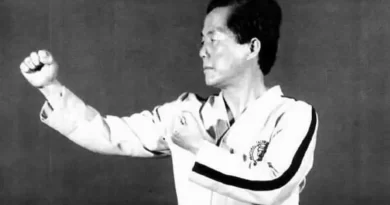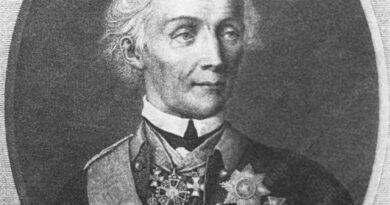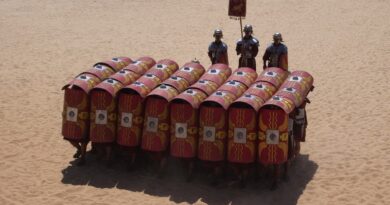Japanese kamikaze
-
Table of Contents
- The History of Japanese Kamikaze Pilots
- Examining the Motivations Behind Japanese Kamikaze Missions
- Exploring the Legacy of Japanese Kamikaze Pilots
- The Impact of Japanese Kamikaze Missions on World War II
- The Role of Japanese Kamikaze Pilots in the Pacific Theater
- Examining the Role of Japanese Kamikaze Pilots in the Battle of Okinawa
- Analyzing the Role of Japanese Kamikaze Pilots in the Battle of Leyte Gulf
The History of Japanese Kamikaze Pilots
The Kamikaze pilots of Japan were a unique and tragic part of World War II. The term “Kamikaze” translates to “divine wind” and was first used to describe a typhoon that saved Japan from a Mongol invasion in 1281. During World War II, the term was used to describe Japanese pilots who flew their planes into Allied ships in suicide missions.
The Kamikaze pilots were part of a special unit of the Japanese military known as the Special Attack Force. The unit was formed in October 1944 and was made up of pilots who volunteered to fly suicide missions. The pilots were given special training and were expected to crash their planes into Allied ships in order to cause maximum damage.
The Kamikaze pilots were seen as heroes in Japan and were celebrated in propaganda films and posters. The pilots were given special privileges and were given a farewell ceremony before their missions. The pilots were also given a special flag to carry with them on their mission.
The Kamikaze pilots were successful in their missions, sinking or damaging over 300 Allied ships. However, the cost of these missions was high, with over 4,000 Kamikaze pilots losing their lives.
The Kamikaze pilots were a unique and tragic part of World War II. Their courage and sacrifice will never be forgotten.
Examining the Motivations Behind Japanese Kamikaze Missions
The Japanese Kamikaze missions of World War II remain one of the most controversial and widely discussed topics in military history. The motivations behind these missions have been the subject of much debate, with some arguing that they were a desperate attempt to turn the tide of the war, while others suggest that they were a form of suicide terrorism. In order to gain a better understanding of the motivations behind these missions, it is important to examine the historical context in which they took place.
At the time of the Kamikaze missions, Japan was in a desperate situation. The country had been at war with the Allied forces since 1941, and by 1945, it was clear that Japan was losing the war. The Japanese military was outmatched in terms of technology and resources, and the country was facing a severe shortage of fuel and other supplies. In this context, the Japanese military began to consider desperate measures, such as the use of Kamikaze pilots.
The Kamikaze missions were seen as a way to turn the tide of the war in Japan’s favor. The pilots were seen as martyrs, sacrificing their lives for the greater good of the nation. The Japanese military believed that the Kamikaze pilots would be able to inflict significant damage on the Allied forces, and that this would be enough to turn the tide of the war.
The Kamikaze missions were also seen as a way to boost morale among the Japanese people. The pilots were seen as heroes, and their sacrifice was seen as a noble act of patriotism. This was seen as a way to rally the Japanese people behind the war effort, and to give them hope that the war could still be won.
Finally, the Kamikaze missions were seen as a way to avoid the humiliation of surrender. The Japanese military believed that if they could inflict enough damage on the Allied forces, they could force them to negotiate a peace treaty on more favorable terms. This was seen as preferable to the humiliation of surrendering to the Allied forces.
In conclusion, the motivations behind the Japanese Kamikaze missions of World War II were complex and varied. The missions were seen as a way to turn the tide of the war, to boost morale among the Japanese people, and to avoid the humiliation of surrender. While the missions ultimately failed to achieve their goals, they remain a powerful symbol of the courage and patriotism of the Japanese people.
Exploring the Legacy of Japanese Kamikaze Pilots
The legacy of Japanese Kamikaze pilots is one that has been studied and discussed for decades. During World War II, these pilots were tasked with a suicide mission to crash their planes into Allied ships in order to inflict maximum damage. While the Kamikaze pilots were seen as heroes in Japan, their legacy is a complex one that has been debated ever since.
The Kamikaze pilots were part of a special unit of the Japanese military known as the Special Attack Corps. The pilots were volunteers who were willing to sacrifice their lives for the sake of their country. They were seen as brave and heroic by the Japanese people, and their actions were seen as a way to protect their homeland.
The Kamikaze pilots were trained to fly their planes into Allied ships, often at great risk to their own lives. The pilots were given little to no protection, and many of them died in the process. The Kamikaze pilots were seen as martyrs in Japan, and their legacy has been celebrated in books, films, and other forms of media.
The legacy of the Kamikaze pilots is a complex one. While they were seen as heroes in Japan, their actions were seen as a desperate and ultimately futile attempt to turn the tide of the war. The Kamikaze pilots were seen as a symbol of Japanese militarism and aggression, and their legacy has been used to justify the use of suicide attacks in other conflicts.
The legacy of the Kamikaze pilots is one that will continue to be debated for years to come. While their actions were seen as heroic in Japan, their legacy is a complex one that has been used to justify the use of suicide attacks in other conflicts. The legacy of the Kamikaze pilots is one that will continue to be studied and discussed for years to come.
The Impact of Japanese Kamikaze Missions on World War II
The Japanese Kamikaze missions of World War II were a unique and devastating tactic employed by the Japanese military. The term “Kamikaze” translates to “divine wind” and was used to describe the pilots who would fly their planes into enemy ships in an effort to inflict maximum damage. The Kamikaze missions were a last-ditch effort by the Japanese to turn the tide of the war in their favor.
The Kamikaze missions began in October of 1944 and continued until the end of the war in August of 1945. During this time, over 4,000 Japanese pilots volunteered to take part in the Kamikaze missions. The pilots were typically young men in their late teens or early twenties who had been trained to fly and had a strong sense of patriotism and loyalty to their country.
The Kamikaze missions had a devastating impact on the Allied forces. The pilots were willing to sacrifice their lives in order to inflict maximum damage on the enemy ships. The Kamikaze pilots were able to sink or severely damage over 300 Allied ships, including several aircraft carriers. The Kamikaze missions also caused thousands of casualties among the Allied forces.
The Kamikaze missions were a desperate attempt by the Japanese to turn the tide of the war in their favor. However, the missions ultimately failed to achieve their goal. The Kamikaze missions caused significant damage to the Allied forces, but they were unable to prevent the eventual defeat of Japan.
The Kamikaze missions of World War II were a unique and devastating tactic employed by the Japanese military. The pilots were willing to sacrifice their lives in order to inflict maximum damage on the enemy ships. The Kamikaze missions caused significant damage to the Allied forces, but ultimately failed to achieve their goal of preventing the eventual defeat of Japan.
The Role of Japanese Kamikaze Pilots in the Pacific Theater
The role of Japanese Kamikaze pilots in the Pacific Theater during World War II was one of immense sacrifice and bravery. Kamikaze pilots were members of the Japanese military who volunteered to fly their aircraft into Allied ships in order to inflict maximum damage. The term “Kamikaze” translates to “divine wind” and was first used to describe a typhoon that saved Japan from a Mongol invasion in 1281.
Kamikaze pilots were seen as a last resort for the Japanese military, as they were used to counter the overwhelming Allied forces in the Pacific Theater. The Japanese military believed that the pilots’ willingness to sacrifice their lives for their country would be enough to turn the tide of the war.
Kamikaze pilots were trained to fly their aircraft into Allied ships, often at great personal risk. The pilots were expected to fly their planes at high speeds and low altitudes in order to maximize the damage inflicted on the enemy ships. The pilots were also expected to crash their planes into the ships, rather than simply dropping bombs or torpedoes.
Kamikaze pilots were seen as heroes in Japan, and their sacrifice was seen as a noble act of patriotism. The pilots were often honored with memorials and ceremonies after their deaths.
The Kamikaze pilots were ultimately unsuccessful in their mission, as the Allied forces continued to gain ground in the Pacific Theater. However, their bravery and sacrifice will never be forgotten. The Kamikaze pilots are remembered as a symbol of Japanese courage and patriotism, and their legacy will live on for generations to come.
Examining the Role of Japanese Kamikaze Pilots in the Battle of Okinawa
The Battle of Okinawa was a major conflict in the Pacific Theater of World War II, lasting from April 1 to June 22, 1945. During this battle, the Japanese military employed a unique tactic: the use of kamikaze pilots. Kamikaze pilots were Japanese military personnel who flew their aircraft into Allied ships in a suicide mission. This tactic was used in an attempt to turn the tide of the battle in favor of the Japanese forces.
Kamikaze pilots were typically young men, often in their late teens or early twenties. They were volunteers who had been trained to fly and were willing to sacrifice their lives for the cause. The Japanese military believed that the kamikaze pilots would be able to inflict significant damage on the Allied forces, and thus, they were willing to accept the high cost of these missions.
The kamikaze pilots were successful in their mission. During the Battle of Okinawa, they managed to sink or damage over 300 Allied ships. This was a significant blow to the Allied forces, and it helped to slow their advance. However, the kamikaze pilots also suffered heavy losses. Over 4,000 of them were killed in action, and many more were injured.
The use of kamikaze pilots was a controversial tactic. While it was effective in inflicting damage on the Allied forces, it was also seen as a desperate measure. The Japanese military was willing to sacrifice the lives of its own people in order to gain an advantage in the battle. This was seen as a sign of desperation, and it was widely condemned by the international community.
The role of the kamikaze pilots in the Battle of Okinawa was significant. They managed to inflict significant damage on the Allied forces, and their sacrifice was seen as a sign of the Japanese military’s commitment to the cause. However, their use was also controversial, and it was seen as a desperate measure by many.
Analyzing the Role of Japanese Kamikaze Pilots in the Battle of Leyte Gulf
The Battle of Leyte Gulf, fought in October 1944, was one of the largest naval battles in history. It was a decisive victory for the Allied forces, but it came at a great cost. One of the most significant contributions to the Allied victory was the role of the Japanese Kamikaze pilots.
Kamikaze pilots were Japanese military personnel who volunteered to fly their aircraft into Allied ships in order to inflict maximum damage. The term “Kamikaze” translates to “divine wind” and was used to describe the pilots’ willingness to sacrifice their lives for the greater good of their country.
The Kamikaze pilots were a formidable force during the Battle of Leyte Gulf. They flew their planes directly into Allied ships, causing significant damage and casualties. The Kamikaze pilots were able to inflict more damage than conventional bombers, as they were able to fly at lower altitudes and were less likely to be shot down.
The Kamikaze pilots were also able to cause psychological damage to the Allied forces. The sight of a plane diving directly into a ship was a terrifying experience for the Allied sailors, and the Kamikaze pilots were able to instill fear and uncertainty in the Allied forces.
The Kamikaze pilots played a crucial role in the Battle of Leyte Gulf. Their willingness to sacrifice their lives for their country was an inspiration to the Japanese forces, and their bravery and skill in the air was a major factor in the Allied victory. The Kamikaze pilots will always be remembered as heroes of the Battle of Leyte Gulf.



